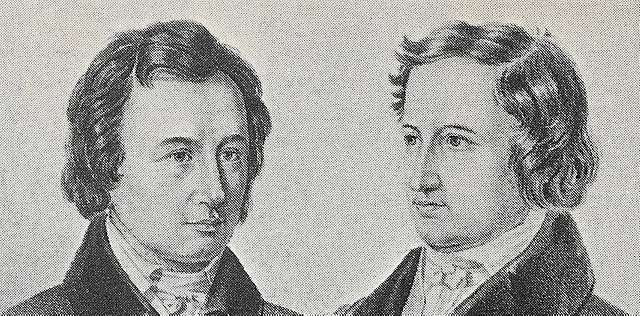The 19th century investigated language and learning in more detail. This led to the formal development of linguistics, phonetics, and neurolinguistics, as well as the first-ever formal language learning method, the so-called grammar-translation method.
It all started with fairy tales.
You are probably familiar with the Grimm brothers and their collection of folk fairy tales. But what you might not know is that Jacob and Wilhelm Grimm were also serious scientists who made major contributions to the linguistic study of the history of languages.
Their fairy tales were originally meant as source material for their linguistic studies of German phonetics and phonology. They were the first linguistic corpus of language. In order to find as much language as possible, they collected and wrote down as many “fairy tales” as they could find.
In 1812 they realized the cultural value of these stories and published the entire collection of over 200 stories, such as Snow White, Rapunzel, Rumpelstiltskin, Sleeping Beauty, and Cinderella. They are the best-selling books ever published. They remain in print today, although they have been modified and censored numerous times.
These fairy tales are one of the best materials for language learning, because almost everybody already knows them.
The Grimms’ linguistic study led them to publish a book of German Grammar in 1822, and the first comprehensive dictionary of the German language in 1854.
In these books, they talked about how people in different places speak differently, kind of like how people in different parts of the country might say things differently today. They showed that it’s not just about learning words; it’s also about understanding where the words come from and the history behind them. Their work helps us learn languages better today by reminding us that knowing a language’s story is just as important as knowing its words. So, thanks to the Brothers Grimm, we can learn languages with a better understanding of their roots and how they’ve grown over time.







